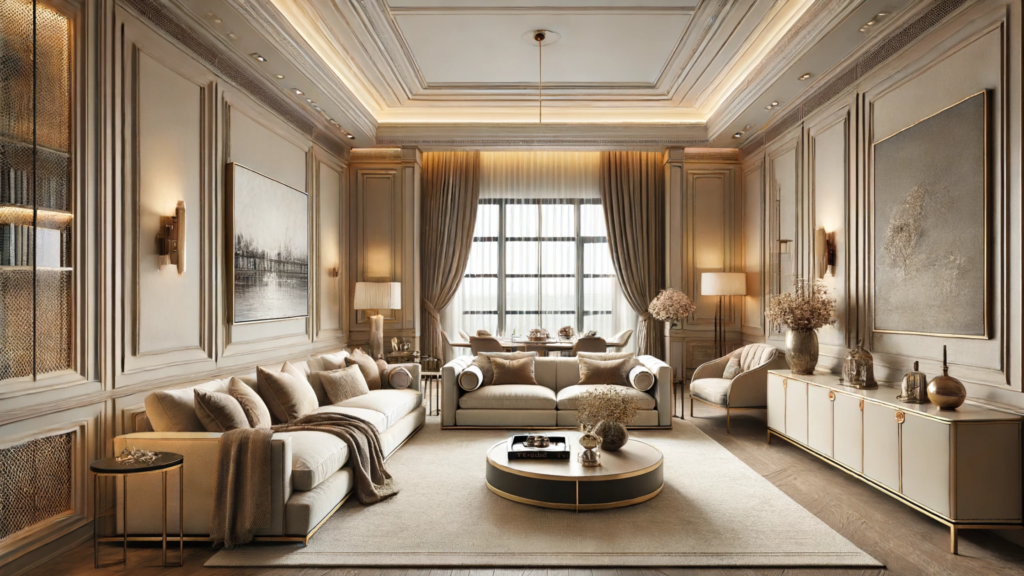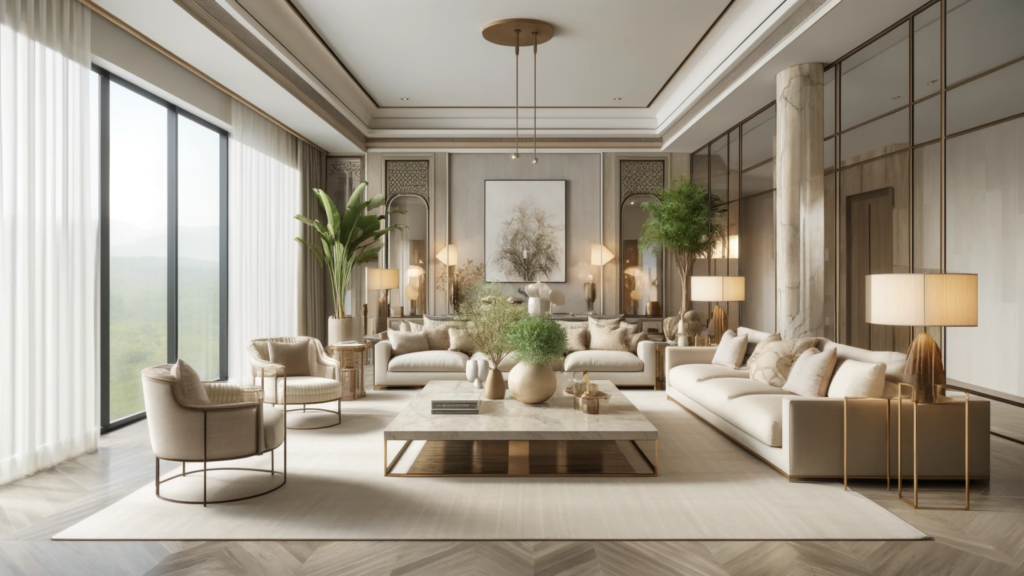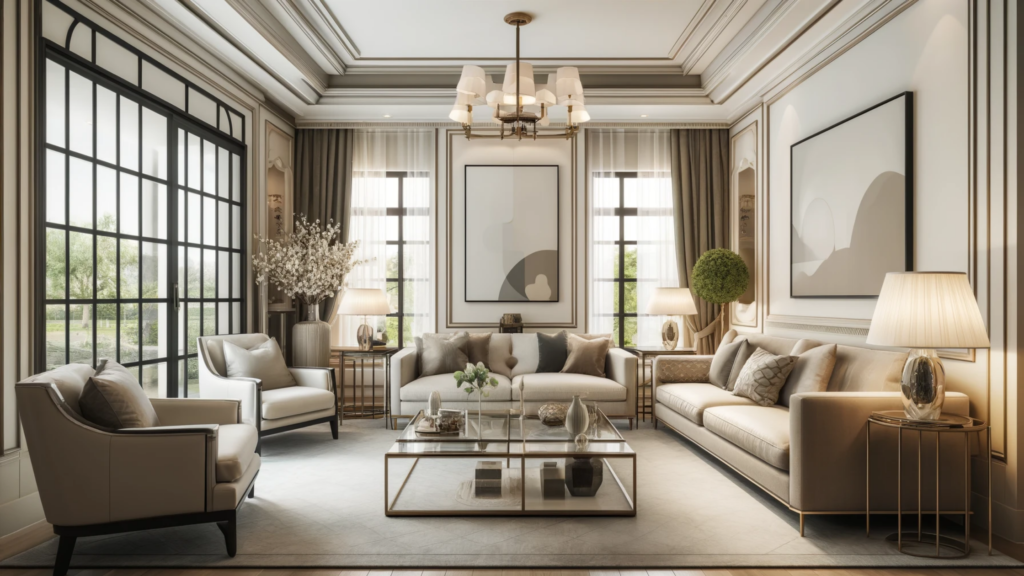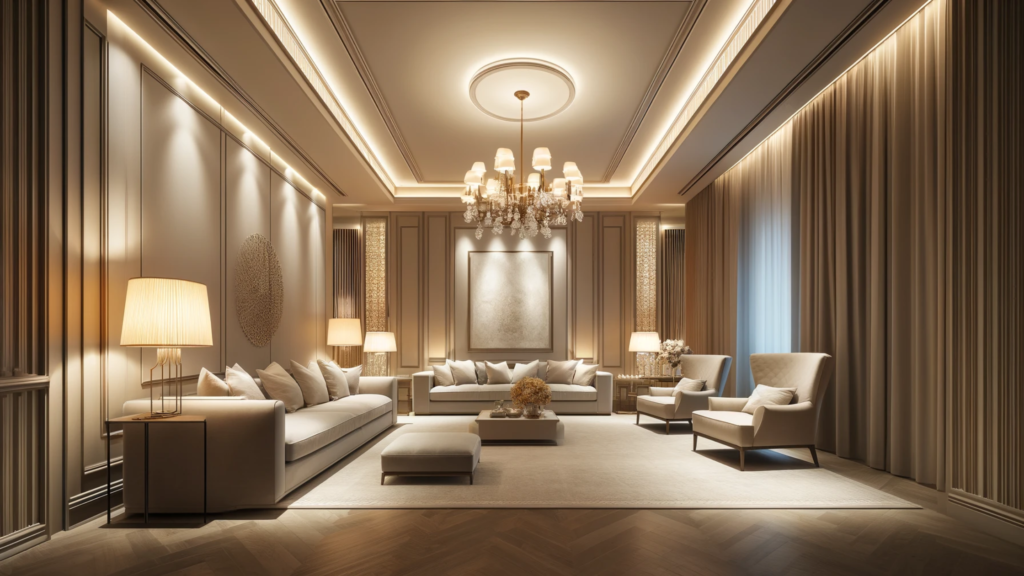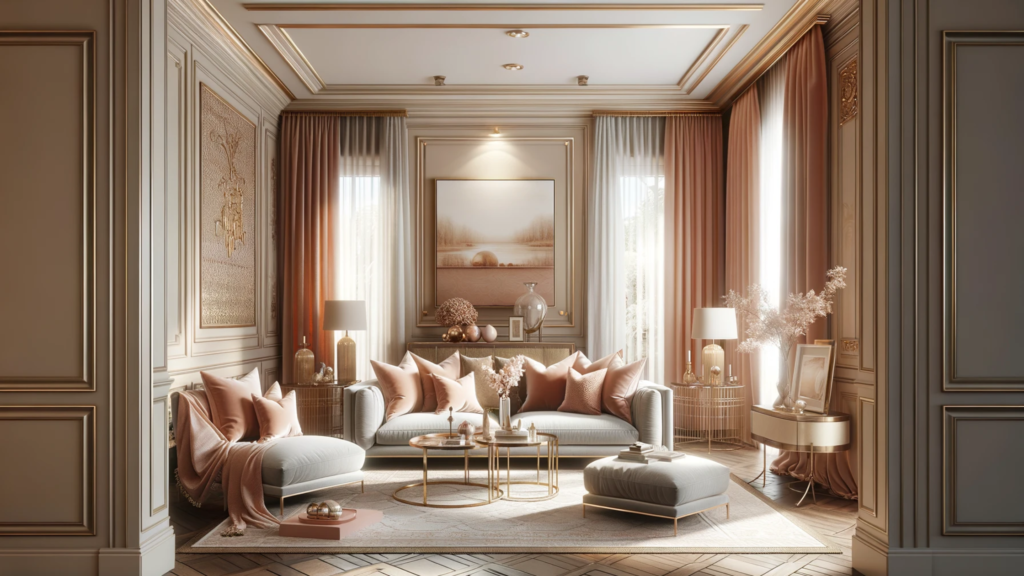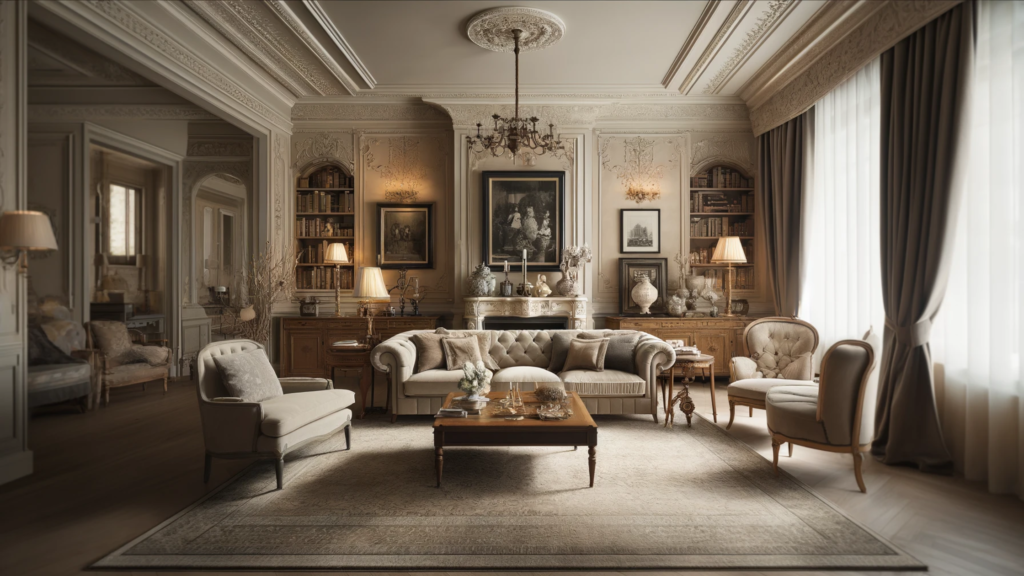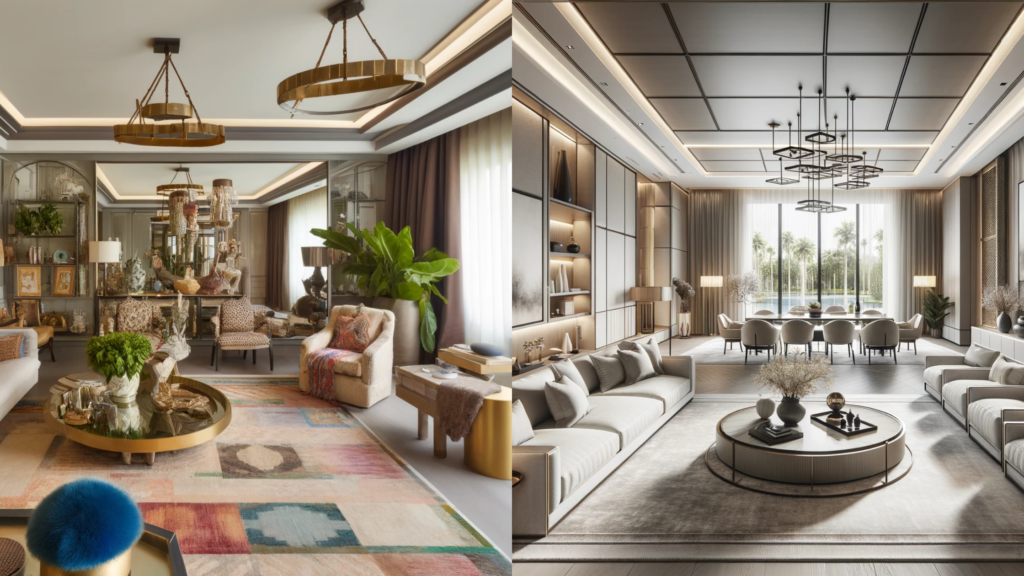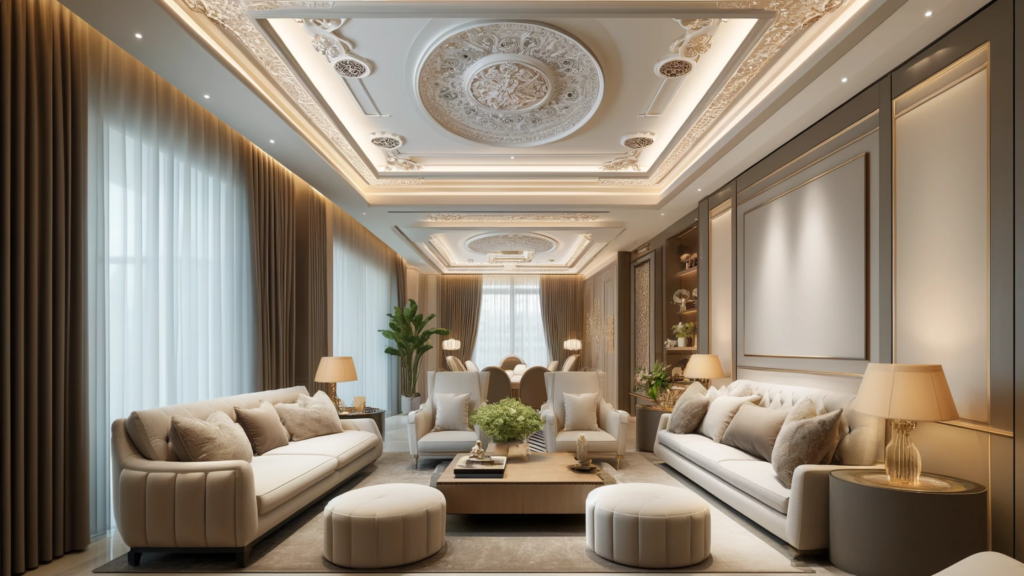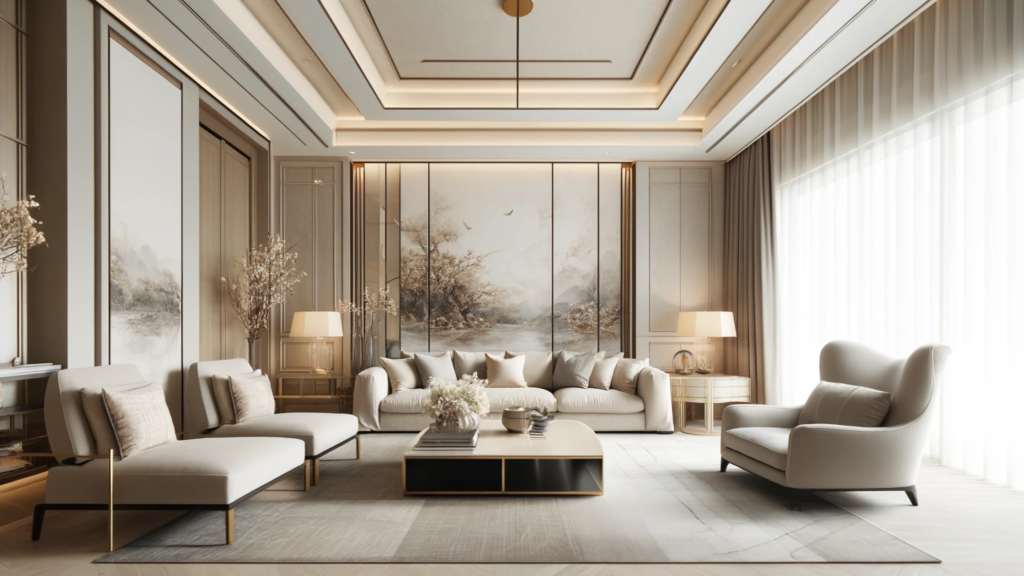Wall Panelling: Adding Subtle Elegance to your Walls
Wall Panelling: Adding Subtle Elegance to your Walls Wall panelling is a versatile interior design technique that can be incorporated to easily elevate the look of your home or office surroundings, by adding a touch of sophistication. Originating from traditional wood-clad walls in historic homes, wall panelling has evolved to include a variety of materials and styles, making it suitable for both classic and contemporary interiors. Table of Contents Benefits of Wall Panelling Aesthetic Enhancement Wall panelling adds texture, depth, and character to a room, transforming plain walls into stylish focal points. It can complement various interior design styles, from rustic and traditional to modern and minimalist. Durability and Protection Panelling provides an additional layer of protection to walls, shielding them from dents, scratches, and other damages. This is particularly useful in high-traffic areas or homes with children and pets. Insulation and Soundproofing Certain types of wall panelling materials, like wood and MDF, offer excellent insulation properties, helping to maintain a consistent indoor temperature. Additionally, panelling can enhance soundproofing, reducing noise transmission between rooms. Versatility in Design Options Wall panelling comes in numerous styles, including shiplap, wainscoting, beadboard, and board and batten, allowing homeowners to choose the perfect look for their space. It can be painted, stained, or left in its natural finish to suit individual tastes. Easy Maintenance Wall panels are generally easy to clean and maintain. Unlike painted walls, which may require frequent touch-ups, panelling can be wiped down with a damp cloth to remove dust and dirt. Wall Panelling Materials and Wall Décor Ideas Wood Panelling Types of Wood: Pine, Oak, Cedar, Reclaimed Wood Wood panelling remains a classic choice for many homeowners, offering a natural and timeless look. Pine is a popular option due to its affordability and ease of installation, while oak is favored for its durability and rich grain patterns. Cedar is known for its aromatic properties and resistance to decay, making it ideal for damp environments. Reclaimed wood, with its unique, weathered appearance, adds character and sustainability to any design, giving new life to old materials. Pros and Cons of Wood Panelling The benefits of wood panelling include its natural beauty, warmth, and versatility. It can be stained or painted to match any decor and provides good insulation. However, wood panelling can be susceptible to moisture damage, warping, and pests if not properly treated. Additionally, it may require more maintenance than some other materials and can be more expensive depending on the type of wood chosen. Maintenance and Care Tips To maintain wood panelling, regular dusting and occasional cleaning with a damp cloth are necessary. It’s important to avoid excessive moisture and to treat the wood periodically with a protective finish to preserve its appearance and durability. For reclaimed wood, a thorough cleaning and treatment to remove any pests or contaminants is essential before installation. MDF (Medium Density Fibreboard) Advantages of MDF for Wall Panelling MDF is an engineered wood product made from compressed wood fibers, offering a smooth and consistent surface. It is less expensive than solid wood and can be easily painted or veneered, making it a cost-effective option for many homeowners. MDF is also resistant to warping and cracking, providing a stable and durable panelling solution. Common Uses and Design Styles MDF is commonly used for wainscoting, beadboard, and shiplap styles, providing a clean and polished look. It is ideal for painted finishes, allowing for a wide range of colors and designs. MDF panelling can be used in various settings, from traditional to modern interiors, and is particularly popular in high-traffic areas like hallways and kitchens due to its durability. Installation and Maintenance Installing MDF panelling involves cutting the panels to size, attaching them to the wall with adhesive or nails, and finishing with paint or veneer. Maintenance is relatively simple, requiring regular dusting and occasional cleaning with a damp cloth. It’s important to avoid prolonged exposure to moisture, as MDF can swell if it gets wet. PVC and Vinyl Panelling Installation and Maintenance PVC and vinyl panelling are highly durable and water-resistant, making them suitable for areas prone to moisture, such as bathrooms and kitchens. These materials are resistant to mold, mildew, and insect damage, providing a low-maintenance and long-lasting wall covering. Ideal Applications and Design Options PVC and vinyl panels come in a variety of designs, including faux wood and stone finishes, allowing homeowners to achieve the look of natural materials without the associated maintenance. They are ideal for creating clean, modern lines or for use in utility areas where durability and ease of cleaning are paramount. Installation Guidelines Installation of PVC and vinyl panelling is straightforward, often involving interlocking panels that snap together and are attached to the wall with adhesive or screws. These materials can be cut to size with standard tools and typically require minimal finishing work. Maintenance involves regular cleaning with mild soap and water, making it an easy-care option. Installation Guidelines Installation of PVC and vinyl panelling is straightforward, often involving interlocking panels that snap together and are attached to the wall with adhesive or screws. These materials can be cut to size with standard tools and typically require minimal finishing work. Maintenance involves regular cleaning with mild soap and water, making it an easy-care option. Metal Panelling Industrial and Modern Design Aesthetics Metal panelling is a bold choice that brings an industrial or modern edge to interior spaces. It is commonly used in lofts, contemporary homes, and commercial settings to create a sleek and edgy aesthetic. Metals like aluminum, stainless steel, and copper offer unique finishes and textures that can be used to make striking feature walls. Types of Metal Used in Panelling The most common metals used for panelling are aluminum, stainless steel, and copper. Aluminum is lightweight and corrosion-resistant, making it suitable for various applications. Stainless steel offers a clean, modern look with excellent durability, while copper provides a warm, rich patina that develops over time, adding character to the space. Installation Considerations Installing metal panelling requires careful handling

